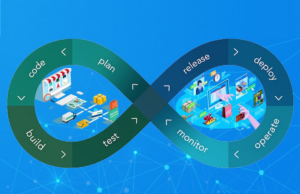
The COVID-19 outbreak has changed the workplace and made remote work a top issue that forces companies to rethink how they handle staff output. According to study by 2025, 36.2 million Americans are expected to work remotely. Staff monitoring programs became accepted as a result of this shift; they have evolved far from traditional time-tracking mechanisms. Programs nowadays aim to increase responsibility, openness, and efficiency in a distributed firm. Analysing how employee monitoring has changed in the post-COVID era can help us to better understand the modern business environment.
Working from anywhere and widening monitoring requirements
The sudden shift to remote labour begged questions about productivity free from in-office oversight. While remote work lost this visibility, managers could instantly observe employee behaviour in everyday settings. Companies began then employing digital monitoring tools to make sure output remained high even if staff members worked from home.
Contemporary techniques of employee monitoring go beyond simple hour tracking of performance. They give details on task accomplishment, application use, and production trends. These technologies help managers in remote teams to find inefficiencies and streamline processes, hence improving responsibility and performance.
Technological Developments in Tools of Monitoring
Real-time insights, comprehensive analytics, and seamless interaction with project management systems are today made possible by quickly developing staff monitoring solutions. Modern technologies, unlike more conventional time-tracking systems, observe production patterns using artificial intelligence and machine learning, therefore enabling managers to make data-driven decisions.
For example, AI-powered systems can identify burnout or disengagement, which lets managers act early to support their employees. Improving performance and well-being now takes front stage instead of tracking, therefore enhancing the remote working conditions.
Balancing employee privacy against output
Finding a balance between output and employee privacy becomes ever more crucial as monitoring technologies get more sophisticated. Remote work lowers the barrier separating home and workplace settings, increasing employee awareness of how their behaviour is seen. Too intrusive observation may compromise moral standards, erode confidence, and perhaps cause legal issues.
To help address these issues, companies are using more open monitoring systems. This ensures data security, assures freely stated observations and explanations for them, and, if necessary, approval of employees. Those who value transparency can boost production without compromising confidence.
Shifting Corporate Culture and Employee Expectancies
The advent of remote work has changed employee expectations; many now prioritise independence and autonomy above exact control. These days, programs of monitoring focus more on assistance than control. Employee monitoring software system data helps one to spot training needs, acknowledge successes, and raise staff involvement.
Companies are using monitoring data to find and reward top performers, therefore creating a positive working atmosphere rather than using it solely for evaluations. Ethical behaviour enhances and productivity increases when staff members see monitoring as a device for development and not only for surveillance.
Conclusion
Workers monitoring systems have increased in step with the changing character of modern work. Companies have to combine privacy and professionalism since remote work is a permanent option made to keep suitable working circumstances. Using modern technology properly and openly will assist organizations to support their remote employees.






